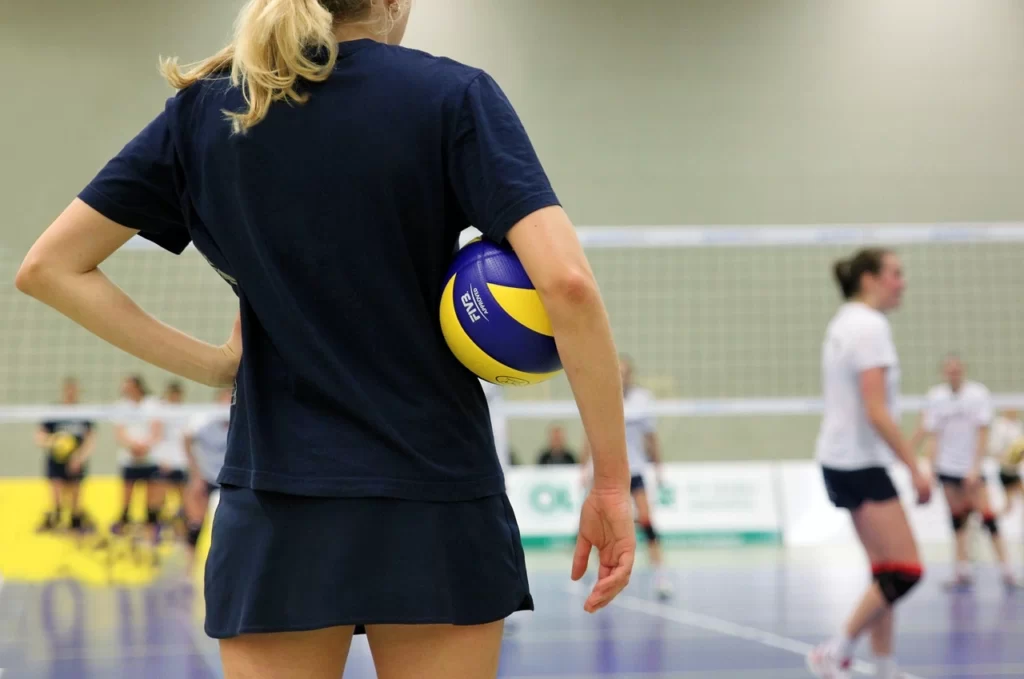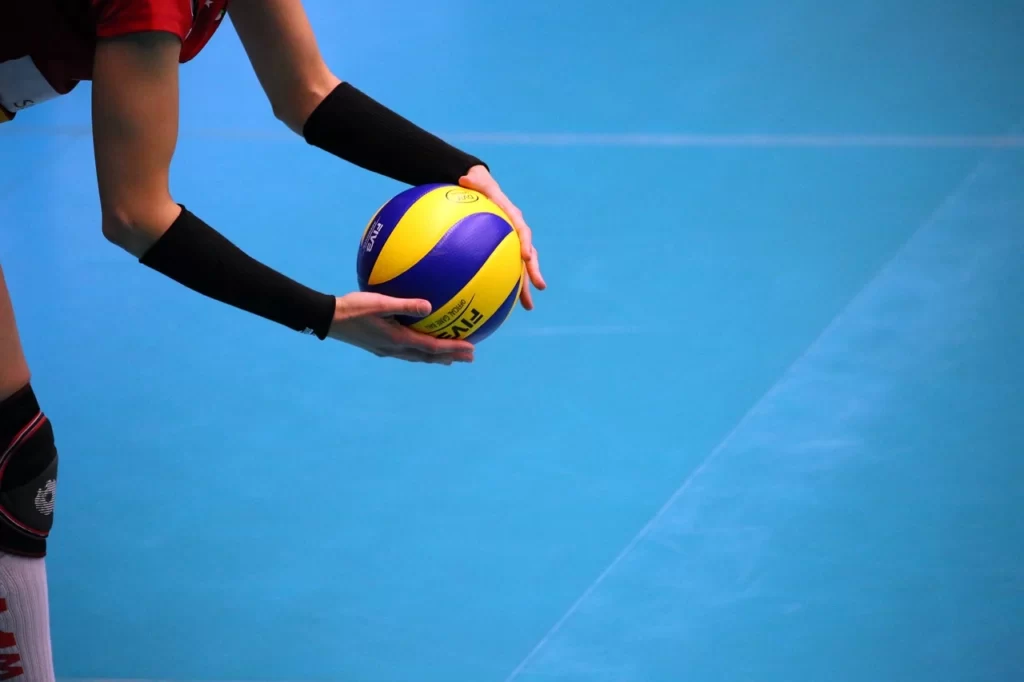On volleyball courts, the ball flies at lightning speed and players demonstrate incredible agility and coordination. But behind this beauty lies strict discipline and clear rules that make volleyball such an exciting and spectacular sport.
The basic rules of volleyball
Let’s tell you about the three most important ones that a beginner should remember.

Rule 1: Number of players and area of responsibility
There are six players on each side of the court, each with their own area of responsibility. The transition from one zone to another takes place after the opponent’s serve, allowing all participants to be in different roles and try their hand at different areas. A team scores points if it attacks successfully or because of opponent’s mistakes.
The main objective is to score the ball on the opponent’s side, doing so in such a way that the opponent does not have time to deflect it.
Rule 2: games and scoring
Each game consists of games, and to win a match you must win three of them. In turn, one game is played to 25 points, and the score difference must be at least two points. If the score reaches 24:24, the game continues until one of the teams has a two-point advantage. This makes the end of any game incredibly tense and exciting.
Rule 3: Touching the ball
A team is allowed up to three touches before the ball must cross the net. One of the most common offences is a fourth touch or double touch (by the same player), resulting in the loss of a point.
Volleyball rules for beginners
For those who are new to volleyball, it is important to understand the basic standards and principles of the game. The rules of volleyball are as simple and easy to understand as possible, so even people far from the sport will be able to understand them.
The first and one of the main things to remember is the system of transitions and interaction between players. Each team member is responsible for their own area, and mistakes often happen when players don’t know who should take the ball. It is important to react quickly and co-operate with teammates.
Beginners should also pay attention to basic techniques: serving and receiving the ball. Mistakes in these elements are often the reason for losing points. By learning how to serve and receive the ball correctly, you can significantly improve your personal performance and contribute to the success of your team.
How to learn to play volleyball
 To master all the rules of volleyball, you need to pay attention not only to theory, but also to practice. The secret is in constant training, which will help develop coordination, reaction and a sense of teamwork.
To master all the rules of volleyball, you need to pay attention not only to theory, but also to practice. The secret is in constant training, which will help develop coordination, reaction and a sense of teamwork.
Basic tips for beginners:
- Practice your serve. Start with the lower serve and gradually move to the upper serve. The lower serve is easier, but the upper serve creates more difficulties for the opponent.
- Reaction development. Constantly work on improving your reactions. Quick decisions and lightning-fast reactions to ball movements are the basis of good play.
- Passing technique. Learn how to pass the ball correctly to make it easier for teammates and ensure a successful attack.
- Team co-operation. Work on mutual understanding with other players. The game requires a clear division of responsibilities and timely responses.
- Physical Preparation. Pay attention to general physical preparation, develop arm and leg strength – this helps to improve all elements of the game.
Volleyball court and ball: what you need to know
A standard court has dimensions of 18 by 9 metres, and is divided by a net into two equal halves. The height of the net differs depending on the level of play and the gender of the participants: for men it is 2.43 metres, for women – 2.24 metres.
The volleyball also has its own characteristics. Its weight is between 260 and 280 grams and its circumference is 65-67 centimetres. The ball should be light and easy to grip, making it ideal for fast and dynamic play. Choosing the right ball and understanding its characteristics affects the accuracy of serves and passes, as well as the comfort of the game in general.
Volleyball serves: from the bottom to the top serve
The bottom serve is considered to be the simplest and is used mainly by beginners.
It is used mainly by beginners. The reason is that the serve requires less effort and minimises errors. It makes it easier to control the direction of the ball, which is very important for beginners.
The overhead serve is more difficult to execute but has significant advantages. It allows you to direct the ball with greater speed and accuracy, creating difficulties for the receiving team. Mastering the overhead serve requires good co-ordination of movements and training of the arm and shoulder muscles.
There are also other difficult types of serves: power serves and planning serves. They require a high level of skill and are perfect for professional players. Each has its own peculiarities and is applied depending on the situation on the court and the level of preparation of the team.
Volleyball terms worth knowing
It is important to know not only the rules of volleyball, but also the terms. This helps to orientate faster during the match and understand the actions of team members. Basic terms: “attack”, “block”, “set”, “diagonal”, “lift ball” and many others. Let’s take a closer look:

- The attack is the key element in scoring a point. The attacking shot is usually taken from the third touch and aims to bring the ball down into the opponent’s court.
- A block is an attempt to stop the ball after an opponent’s attack and for this purpose players line up at the net with their hands in the air.
- “Set – one of the plays in a game.
- “Diagonal” is the specific role of the player responsible for attacking from the back line.
Each of the terms helps you to better understand the essence of the game and build your tactics. For example, knowledge of the term “lift ball” will help you avoid mistakes related to incorrect passing technique. This concept describes a ball that lingers in a player’s hands and does not bounce properly.
Rules of Volleyball: Conclusions
 In the game, every little detail counts. Understanding the rules of volleyball, knowing the terms and executing serves correctly not only helps you to participate in matches, but also to succeed. By starting from the basics and practising regularly, you can become a good player and qualify for competitions of all sizes.
In the game, every little detail counts. Understanding the rules of volleyball, knowing the terms and executing serves correctly not only helps you to participate in matches, but also to succeed. By starting from the basics and practising regularly, you can become a good player and qualify for competitions of all sizes.
 en
en  ru
ru  de
de  ar
ar  es
es  hi
hi  fr
fr  nl
nl  it
it  pt
pt  el
el 



